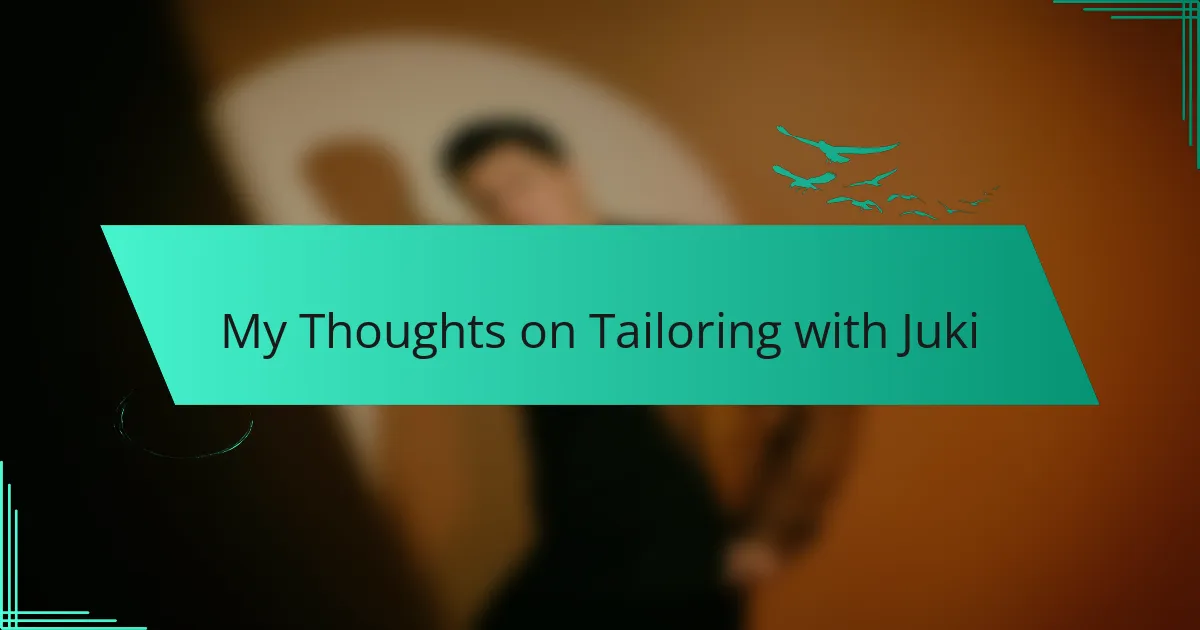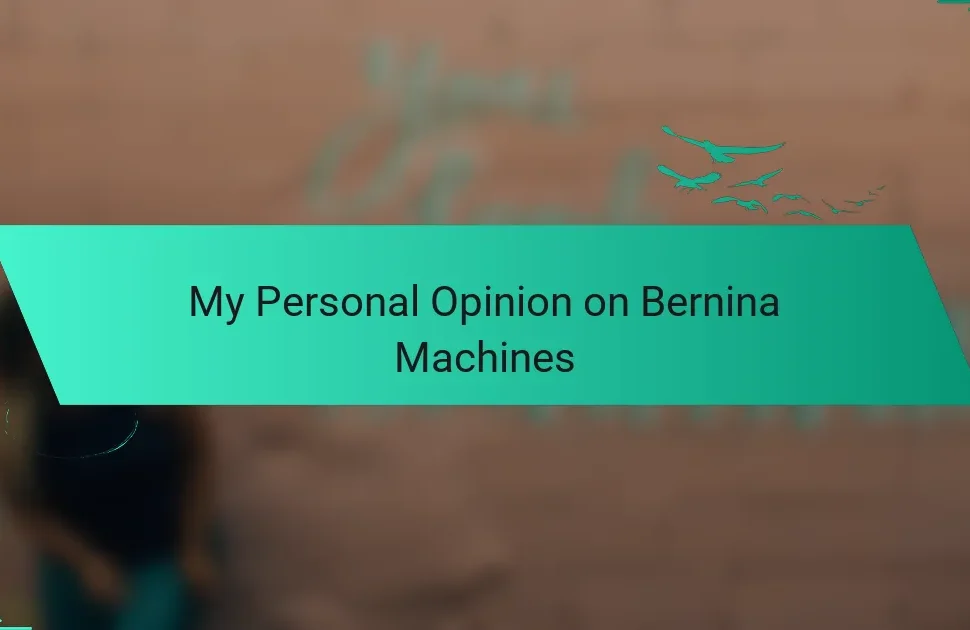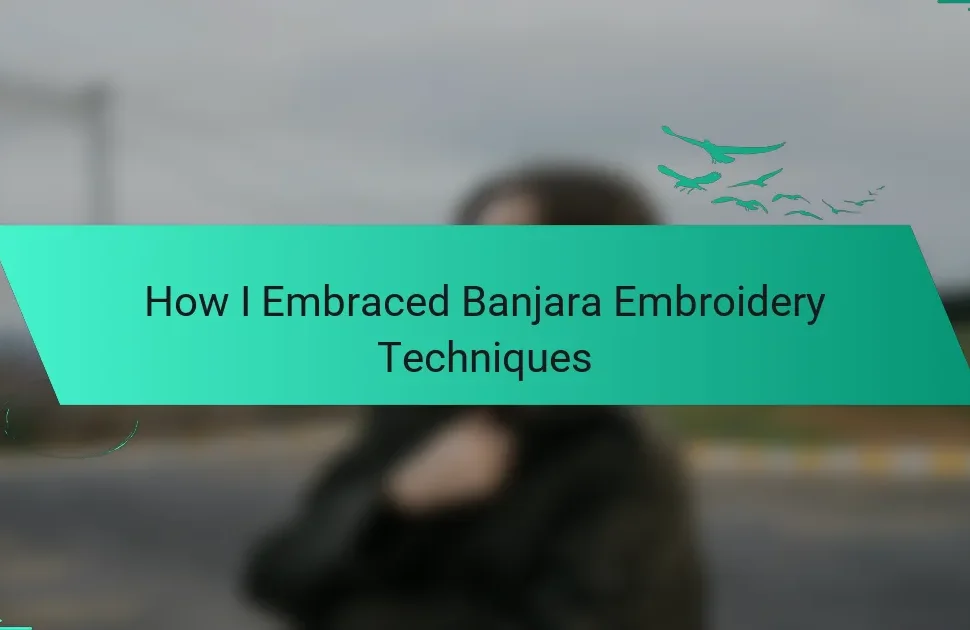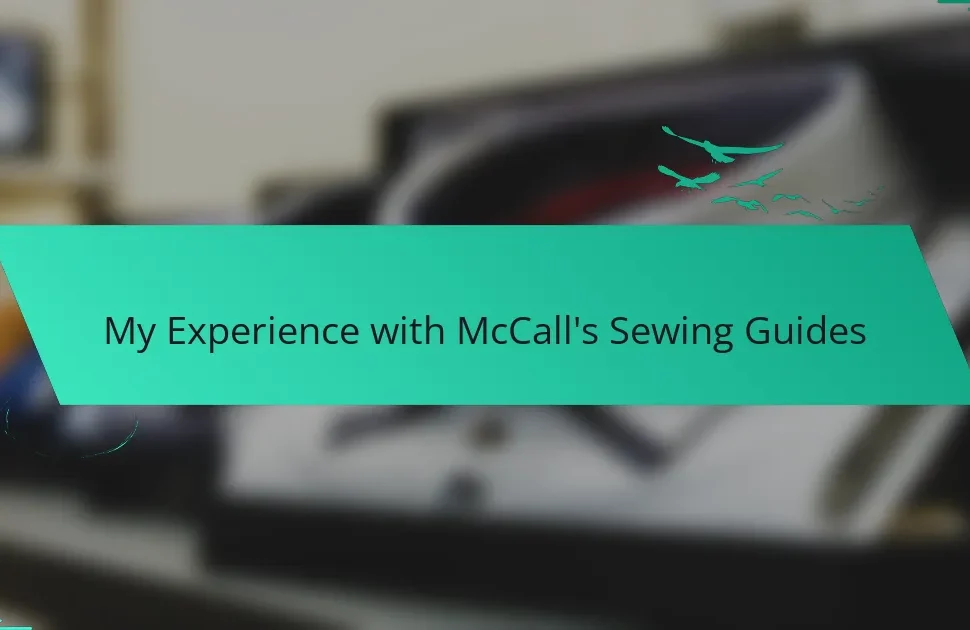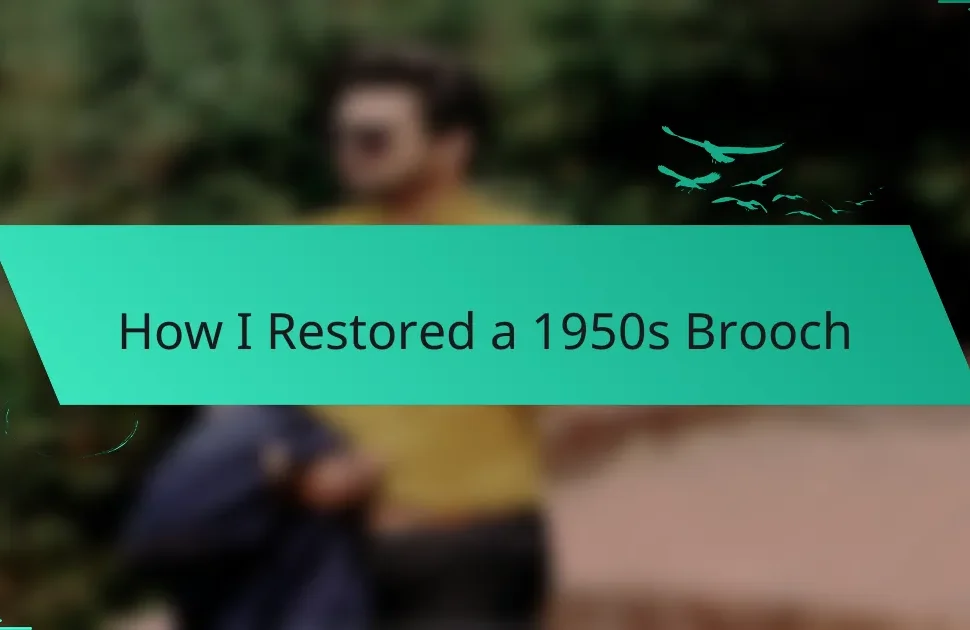Key takeaways
- Vintage fashion combines history with personal expression, allowing individuals to showcase their uniqueness through tailored pieces.
- Understanding tailoring basics, such as accurate measurements and seam allowances, is crucial for achieving a perfect fit with vintage garments.
- Juki sewing machines offer durability, precision, and user-friendliness, making them ideal for both seasoned tailors and beginners working on vintage projects.
- Patience and attention to detail enhance the vintage tailoring experience, ensuring quality results while embracing the character of each piece.
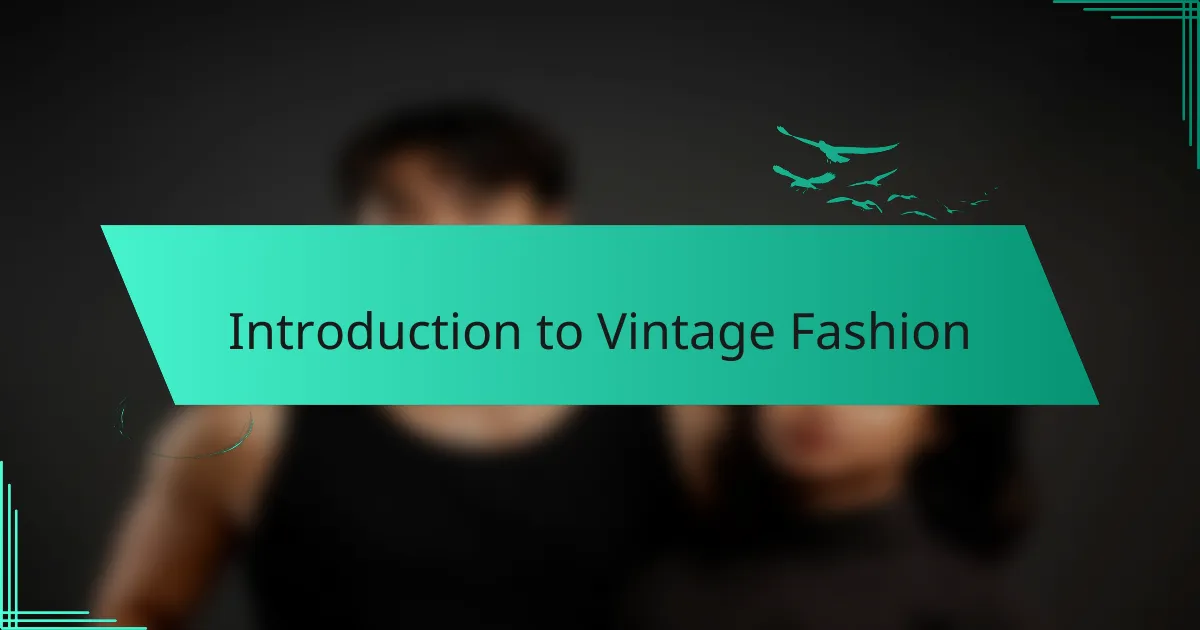
Introduction to Vintage Fashion
Vintage fashion has a unique charm that blends history with personal expression. It allows us to connect with different eras and styles, offering a canvas to showcase individuality. I’ve always been drawn to vintage pieces because they tell a story—each garment holds a memory, evoking emotions that contemporary fashion often lacks.
When I first started exploring vintage fashion, I found that tailoring was a game changer. I remember salvaging a beautiful, albeit oversized, 1940s dress that needed some love. The transformation was exhilarating, and it sparked a passion for DIY tailoring that opened up a world of possibilities.
Here’s a comparison of some popular vintage eras, highlighting their distinct styles:
| Era | Key Characteristics |
|---|---|
| 1920s | Flapper dresses, drop waistlines, art deco patterns |
| 1940s | Shoulder pads, tailored suits, feminine silhouettes |
| 1960s | Mini skirts, bold colors, psychedelic prints |
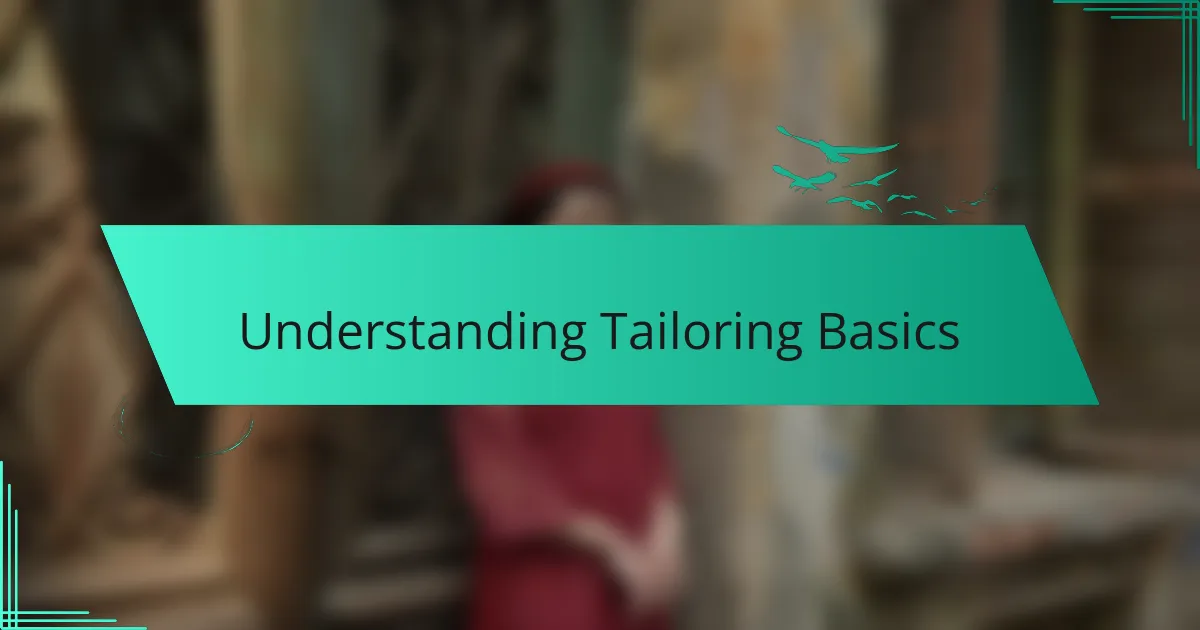
Understanding Tailoring Basics
When diving into the world of tailoring, understanding the basics can feel overwhelming at first. I remember my initial attempts—I was often unsure of where to start, but breaking it down helped immensely. For example, knowing how to take accurate measurements not only builds confidence but also helps ensure a better fit, which is crucial when working with vintage garments.
One fundamental aspect of tailoring is the importance of seam allowances. Initially, I underestimated how vital those extra inches could be. With vintage pieces, they can determine whether a garment sits perfectly against the skin or feels awkwardly tight. Have you ever found a stunning piece that just didn’t sit right? It’s often due to those tiny details being overlooked.
Another key area is the type of fabric you’re working with. Different materials require specific techniques. I’ve learned this the hard way while trying to alter a delicate silk blouse; it slipped and shifted, leading to frustration. Understanding each fabric’s properties can make tailoring smoother, turning any vintage find into a wearable masterpiece.
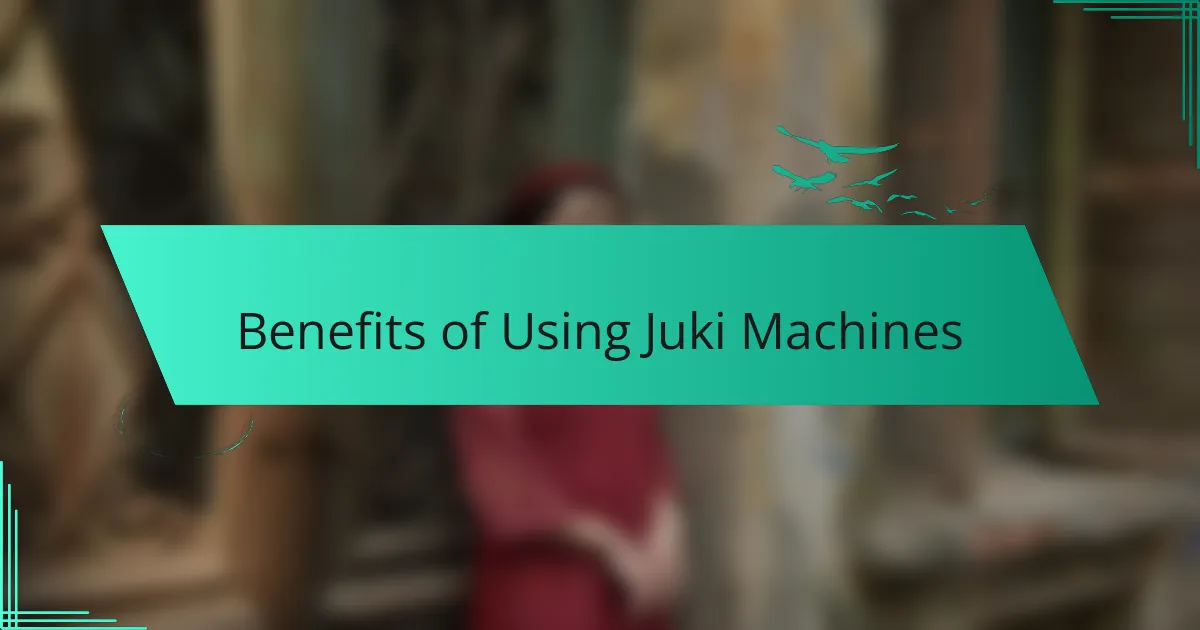
Benefits of Using Juki Machines
When I think about tailoring with Juki machines, the benefits are hard to ignore. First and foremost, Juki machines are known for their durability and reliability, which is essential when working on vintage fashion projects. I remember the first time I used a Juki; it felt like an extension of my own hand, effortlessly gliding through multiple layers of fabric. This tosses aside any fears of machine malfunctions, allowing me to focus on my creativity.
Another advantage is the precision these machines offer. I’ve tackled complex designs that require meticulous stitching, and Juki has never let me down. The consistent stitch quality truly elevates my vintage creations, giving them a professional finish that I wouldn’t achieve with lesser machines. Plus, the ease of adjustments lets me play around with different settings to find the perfect stitch for each project.
Lastly, Juki machines are surprisingly user-friendly, making them perfect for both seasoned tailors and newcomers alike. I’ve seen friends who were hesitant to start sewing dive straight into their projects with Juki, enjoying the process without the intimidation of complicated mechanics.
| Feature | Juki Machine |
|---|---|
| Durability | Highly durable and reliable for long-term use |
| Precision | Excellent stitch quality, perfect for intricate vintage designs |
| User-Friendliness | Easy to operate, suitable for beginners and professionals |
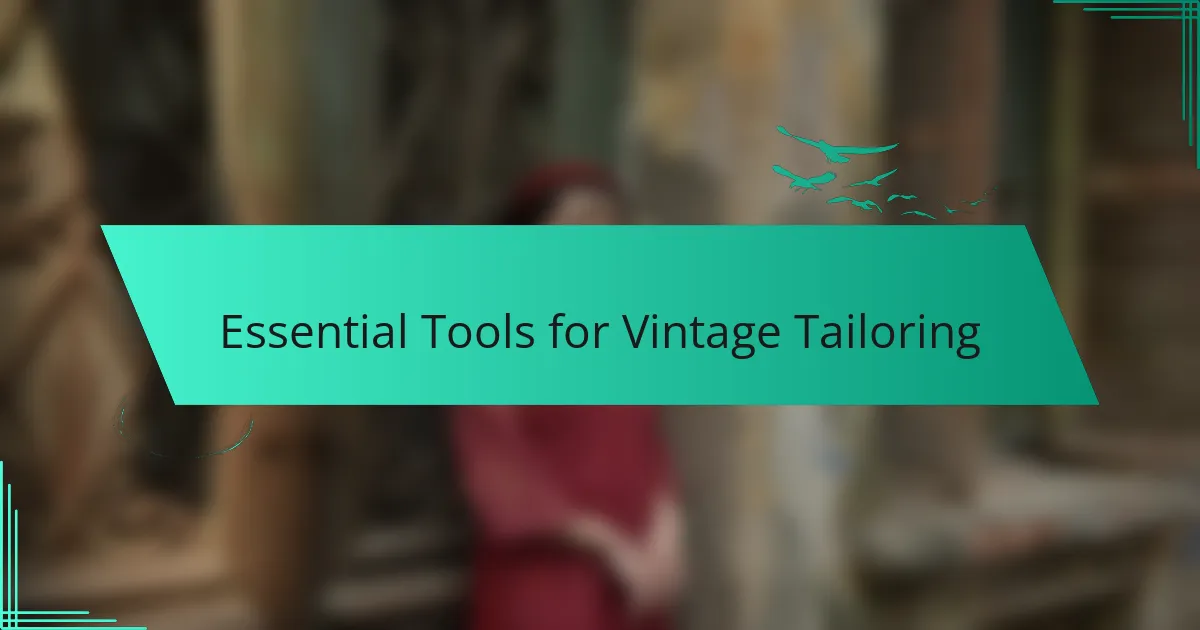
Essential Tools for Vintage Tailoring
Selecting the right tools is essential for successful vintage tailoring. I can’t stress enough how a high-quality pair of fabric scissors can make all the difference. I remember my early days, trying to cut through layers of fabric with dull scissors. The frustration was overwhelming, and the results were often less than perfect. Investing in good scissors not only improves the precision of my cuts but also enhances my overall enjoyment of the process.
Another must-have in my toolkit is a reliable measuring tape. Have you ever tried to wing it with rough estimates? It rarely ends well! I learned the hard way that accurate measurements can make or break a garment’s fit. Having a soft, flexible measuring tape allows me to maneuver around curvy edges easily, ensuring that each piece I work on embraces the body beautifully.
Lastly, a quality tailor’s chalk is indispensable. I can’t tell you how many times I’ve marked fabrics with random pens, only to regret it later. Tailor’s chalk goes on smoothly and can be easily removed, giving me the freedom to make adjustments without the fear of permanent markings. It’s a small tool, but it has truly helped bring my visions to life, allowing the true beauty of each vintage piece to shine through.
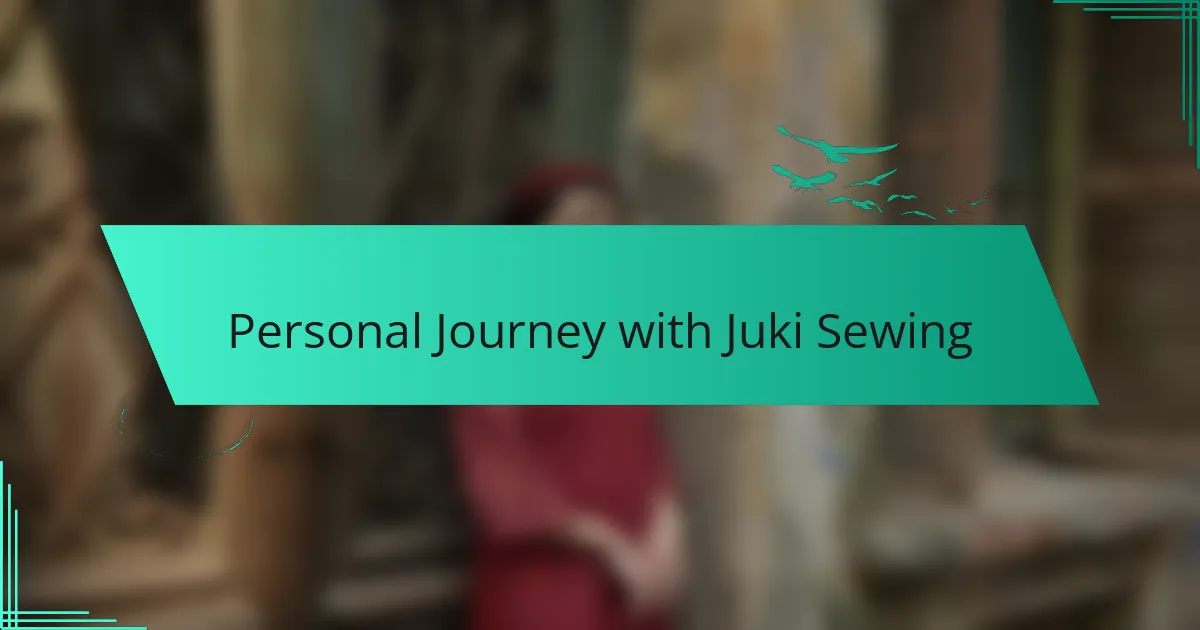
Personal Journey with Juki Sewing
I remember the first time I unboxed my Juki sewing machine—it felt like a rite of passage into a world where my vintage tailoring dreams could finally take shape. As I threaded the machine and prepared my fabric, I felt a rush of excitement mixed with a hint of nervousness. Would this be the game changer I hoped for? It certainly was, lifting me from amateur seamstress to someone who could manipulate fabric with confidence.
With my Juki, I tackled pieces that once felt daunting. One memorable project was a vintage 1960s shift dress that required an intricate hem adjustment. I was initially intimidated—what if I ruined such a beautiful piece? Yet, with the machine’s precision, I glided through the task, turning a potential disaster into a success. Each stitch felt empowering, and it reinforced my belief that the right tools can truly transform what we create.
Over time, I’ve grown to appreciate how Juki doesn’t just make sewing easier, but also more enjoyable. I often find myself lost in my projects, the rhythmic sound of the machine providing a comforting backdrop. It’s become my creative sanctuary, where frustrations dissolve as I pour my heart into restoring vintage treasures. Have you experienced that sense of flow while sewing? With Juki, those moments are abundant, and I cherish this personal journey more than any finished garment.
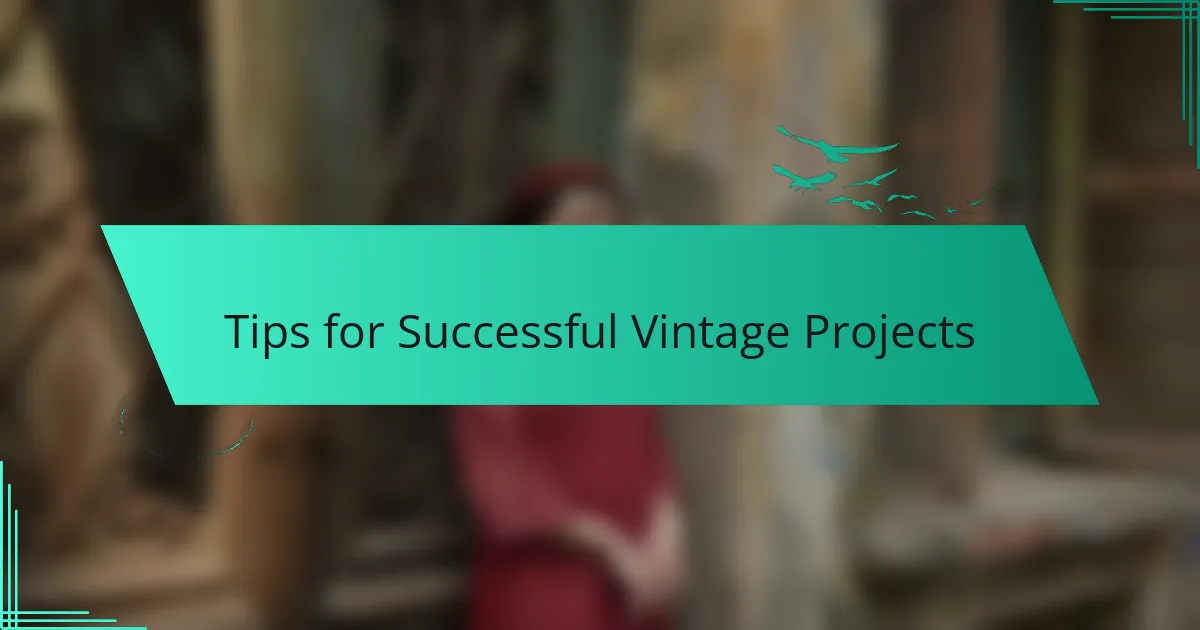
Tips for Successful Vintage Projects
When working on vintage projects, I’ve found that patience is key. Tailoring often involves delicate fabrics and intricate patterns, especially when you’re reviving a piece from the past. I remember a vintage dress I altered – the original seams were fragile, and any rush to finish could have ruined it. Taking my time not only preserved the garment but also let me enjoy the artistry of it all.
To enhance your vintage projects, consider the following tips:
- Choose Quality Materials: Invest in good fabrics and threads. They’ll hold up better and feel nice to work with.
- Practice on Scraps: If you’re unsure about a technique, practice on a scrap piece first. It builds confidence and prevents mistakes.
- Take Precise Measurements: Vintage sizes can differ significantly. Always measure twice to ensure a perfect fit.
- Embrace Imperfections: Each piece tells a story. Don’t shy away from small flaws; they can add character to your creation.
- Document Your Journey: Take photos during the process. It’s rewarding to look back at your progress and see the transformation unfold.
These tips have enriched my DIY experiences and allowed me to create pieces I truly cherish.
